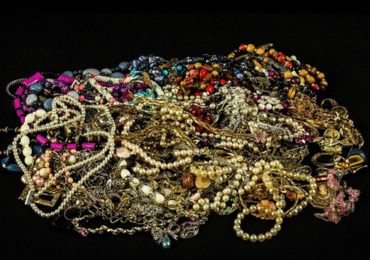Investing in precious metals has been considered a prudent strategy for diversifying a portfolio and preserving wealth. Gold, silver, platinum, and palladium provide a unique combination of historical value, scarcity, and industrial utility, making them attractive to novice and seasoned investors. However, like any investment, there are essential considerations to remember to ensure a successful and informed venture into precious metals. This article presents six critical tips when investing in these valuable commodities.

Educate Yourself Before You Invest
Before diving into the world of precious metals, it’s crucial to arm yourself with knowledge. Understand the different types of precious metals for investment, including coins, bars, and even jewelry. Learn about their historical performance, market trends, and price factors. Familiarize yourself with the various ways to invest, such as physical ownership, exchange-traded funds (ETFs), and futures contracts. As the expert team at PreciousMetalsIRAGuide.com says, the more you know, the better equipped you’ll be to make informed decisions. You can explore the internet to have more insights into precious metals investing.
Consider the economic and geopolitical factors that often influence the value of precious metals. Monitor global events and economic indicators, as they can impact supply and demand dynamics. Additionally, connect with seasoned investors or financial advisors specializing in precious metals to gain valuable insights and perspectives before building your investment strategy. Remember, the journey into precious metals investing can be rewarding, but educating yourself will be a significant asset along the way.
Set Clear Investment Goals
Every investor’s financial goals are unique. Are you looking for short-term gains, long-term wealth preservation, or a combination? Setting clear investment goals will help guide your strategy. If you’re seeking protection against economic downturns and inflation, precious metals might be a hedge in your portfolio. On the other hand, if you’re interested in capitalizing on price fluctuations, you might consider short-term trading. Define your goals to determine the appropriate types of precious metals and investment methods to pursue.
Diversify Your Portfolio
Diversification is a standard principle of investment that helps manage risk. While precious metals are valuable assets, it’s important not to put all your eggs in one basket. Instead, integrate them into a diversified portfolio that includes a mix of asset classes like stocks, bonds, and real estate. The goal is to create a balanced portfolio that can withstand various economic scenarios. Precious metals’ low correlation with traditional assets can offer stability during market turbulence, making them a valuable addition to your investment mix.
Keep in mind that the value of precious metals can be volatile in the short term, so a long-term perspective is essential. Review your portfolio and adjust accordingly to align with your financial goals and risk tolerance. As you navigate the investing world, remember that patience and a well-thought-out strategy are crucial to achieving sustained success in your financial endeavors.
Understand Market Factors and Risks
A range of factors influences the prices of precious metals, and it’s crucial to be aware of these dynamics. Economic indicators, geopolitical events, inflation rates, and even currency fluctuations can impact the value of precious metals. For instance, during economic uncertainty, demand for gold tends to rise as investors seek safe-haven assets. On the other hand, factors like changes in mining production or shifts in industrial demand can also affect prices. Be prepared for the inherent volatility of the market and the potential risks involved.
Choose the Right Form of Ownership
When investing in precious metals, you have options for holding and storing your assets. Some investors prefer physical ownership, which involves purchasing coins or bars and storing them securely. This offers a tangible sense of right and control. Others may opt for ETFs, which expose precious metals without physical storage. ETFs trade on exchanges and can be more liquid than physical assets. Each option has advantages and considerations, so choose the form of ownership that aligns with your investment goals and risk tolerance.
Additionally, if you decide on physical ownership, research reputable storage options like secure vaults or depositories that offer insurance against loss or theft. On the other hand, if you value ease of trading and flexibility, ETFs can provide a convenient way to invest in precious metals while bypassing the complexities of physical storage. Remember that your choice of holding method should reflect your overall investment strategy and preferences.
Research Dealers and Sellers
If you’re considering physical ownership of precious metals, choosing reputable dealers and sellers is essential. Conduct thorough research to ensure that the dealer you’re working with has a solid reputation and a history of delivering genuine and high-quality products. Look for dealers accredited by industry organizations and have positive customer reviews. Avoid deals that seem too good to be true, as counterfeit products and scams can, unfortunately, be prevalent in the precious metals market. Trustworthy dealers will provide transparent pricing, authentication, and secure shipping.
When purchasing precious metals, always pay attention to the purity and authenticity of the products. Reputable dealers often provide certificates of authenticity and detailed information about the metals they sell. If you’re uncertain about a particular dealer or product, don’t hesitate to seek advice from experienced investors or consult with professionals who specialize in precious metals. Your diligence in verifying the credibility of dealers will go a long way in ensuring a safe and successful investment experience.

Investing in precious metals offers a unique opportunity to diversify your portfolio, protect your wealth, and potentially achieve financial goals. By educating yourself about the different types of precious metals, setting clear investment objectives, diversifying your portfolio, understanding market factors, choosing the proper form of ownership, and researching reputable dealers, you can confidently navigate the world of precious metals.
Like any investment, investing in precious metals involves risks and requires careful consideration. Various economic and geopolitical factors can influence market trends, and prices can fluctuate. Therefore, it’s essential to conduct thorough research, stay informed about market developments, and seek advice from financial professionals before making investment decisions.
Whether you’re a novice investor looking to explore new avenues or an experienced investor seeking to diversify further, the world of precious metals holds opportunities for those willing to approach it with knowledge and diligence. Following these tips, you can position yourself for a potentially successful and rewarding journey into investing in precious metals.

